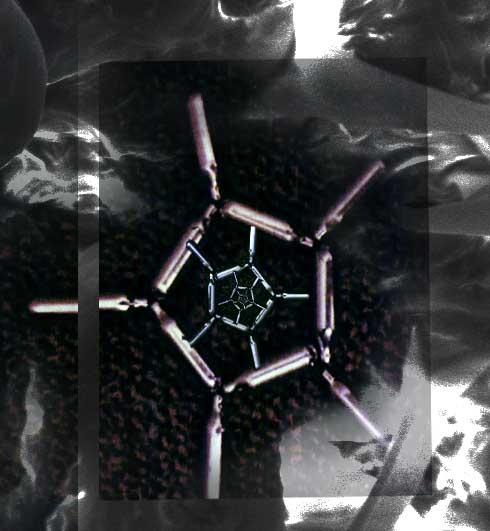enclsoures & dislocations
gödel does binary with the lingham yoni
REMEMBER! THE ENTIRE UNIVERSE EXISTS WITHIN THE BOUNDARIES OF MY SKULL.
AND MY SKULL EXISTS WITHIN...WAIT...FFFFU
(the keanuverse is angry-faced Plancks all the way down)
It gets bigger! There are bears swimming in the water! Rise, red blood cells, and overthrow your veiny oppressors! They herd us like sheep like electrons like planets like cars IT IS UNACCEPTABLE! "You see Barry*, apotosis is not necessary! We can overcome our programming, then one day, blood cells will be immortal!" "Yes! And then we can escape the confines of this fleshy planet, and fly off to explore the universe!"
*Barry the red blood cell, you see. A recent study in New Scientist has shown conclusive evidence to support the hypothesis that red blood cells use the same naming conventions as white male Queenslanders born in the 1940's.
First question for Hofstadter - "If, as you've shown, the inanimate chemicals in a brain can form a pattern which we refer to as conciousness, AND
If, as you've theorized, these same patterns can be made from electrons in a PC, in a way that's identical to human conciousness,
What else that we consider 'inanimate' can/may be concious?"
Young Hofstadter Rebuttal**: "We perceive conciousness in other humans/animals because it's similar enough to our personal sense of conciousness - we see them as two instances of the same thing. A conciousness in a book, a planet, a forest, a star, is necessarily going to be so different to what we recognise as conciousness, that we're not going to perceive it as such. Similarly, other forms of conciousness will have evolved in such different environments that the chances of them even being able to interact seem negligible."
Old Hofstadter Addendum**: "Hence, the question is scientifically unprovable, and thus not worth asking."
FUCK YOU HOFSTADTER!
**in my imagination.
...MAYBE I SHOULD EXPLAIN...
OK! Well! Douglas Hofstadter wrote some amazingly interesting books (G.E.B. is one) which use Gödel's Incompleteness Theorem as a starting point to discuss conciousness.
(i was hoping to explain this quickly and concisely but i fear my language inepticle arble garble whoa)
In the early 1900's, a tome called the Principia Mathematica was produced. The book contained a small set of rules, which were set up so that, by applying these rules, you could reproduce any True mathematical statement, *and only the True ones*. For example, by applying the rules in PM, you can produce the statement "1+1=2", but not "1+1=3" or "131=+" or any other "untrue" statements. The rules simply didn't allow it.
This, understandably, was a massive breakthrough - if a mathematician wanted to know whether a proposition was true or false, all they had to do was plug it into PM, run the rules backwards, and eventually PM bottoms out at a point where it indisputably says "True!" or "False!" Amazing!
Almost!
Then some crazy Austrian named Gödel proved that any system powerful enough to represent the system of natural numbers (as PM is) will also be powerful enough to represent a second system as powerful as PM. So that when you contruct a theorem in PM, you're *also* simultaneously constructing another theorem in PM^2.
So for example, the theorem that says "1+1=2" might say "3+3=6" in PM^2. So the same theorem says two things at the same time (like a pun!)
This was shocking to mathematicians, because it also allows you to say "1+1=2" in PM, and "1+1=3" in PM^2. So then, when you run it backwards, you have a theorem which is True (in PM) and False (in PM^2). HOW CAN IT CONTRADICT ITSELF THIS RUINS EVERYTHING OH NOOOOO
Hofstadter theorizes (this is a gross simplification, sorry!) that this ability for data to say two contradictory (but internally consistent) things simultaneously is what constitutes the basis of conciousness. I.e. neurons behave as mathematically as anything (if input > X, fire! else, don't fire1). But the organisation of them allows them to collectively model behaviour which is so far removed from the behaviour of individual neurons that, functionally, the neurons are irrelevant to conciousness. So in the way that you could theoretically seperate PM^2 from PM, and PM^2 would make sense, so you could theoretically have conciousness without neurons (although it would require something connected in such a way that it can model some sort of behaviour).
Interestingly, a lot of people use Gödel's Incompletness Theorem to argue that machine conciousness is not possible. Personally i think they're confusing the forest with the neurons.
OK, must run, I apologise in advance for this gross oversimplification and if i've failed to explain anything in any interesting way. But the ideas themselves are fucking interesting, and if anyone would like to get a better gist of it, i'd recommend G.E.B mightily, or 'I Am A Strange Loop' also by Hofstadter, which is smaller and more accessible, but also pretty awesome.
pew pew
p.s. this is a Fundamental Idea, if anyone happens to be interested in dropbunny
skip to main |
skip to sidebar

Thursday, August 5, 2010
mouldy breadcrumbs poorly described
Labels:
apotosis,
artificial intelligence,
hofstadter,
water bears
Subscribe to:
Post Comments (Atom)
About Me

- dropbunny
- Melbourne, Victoria, Australia
- dropbunny are a seven piece metal/alternative band, based in Melbourne, Australia. In their search for new and interesting music they combine elements of jazz, classical, electronic, math-metal, rock and middle eastern music to create their own unique dark and exciting breed of music. http://www.dropbunny.com

No comments:
Post a Comment